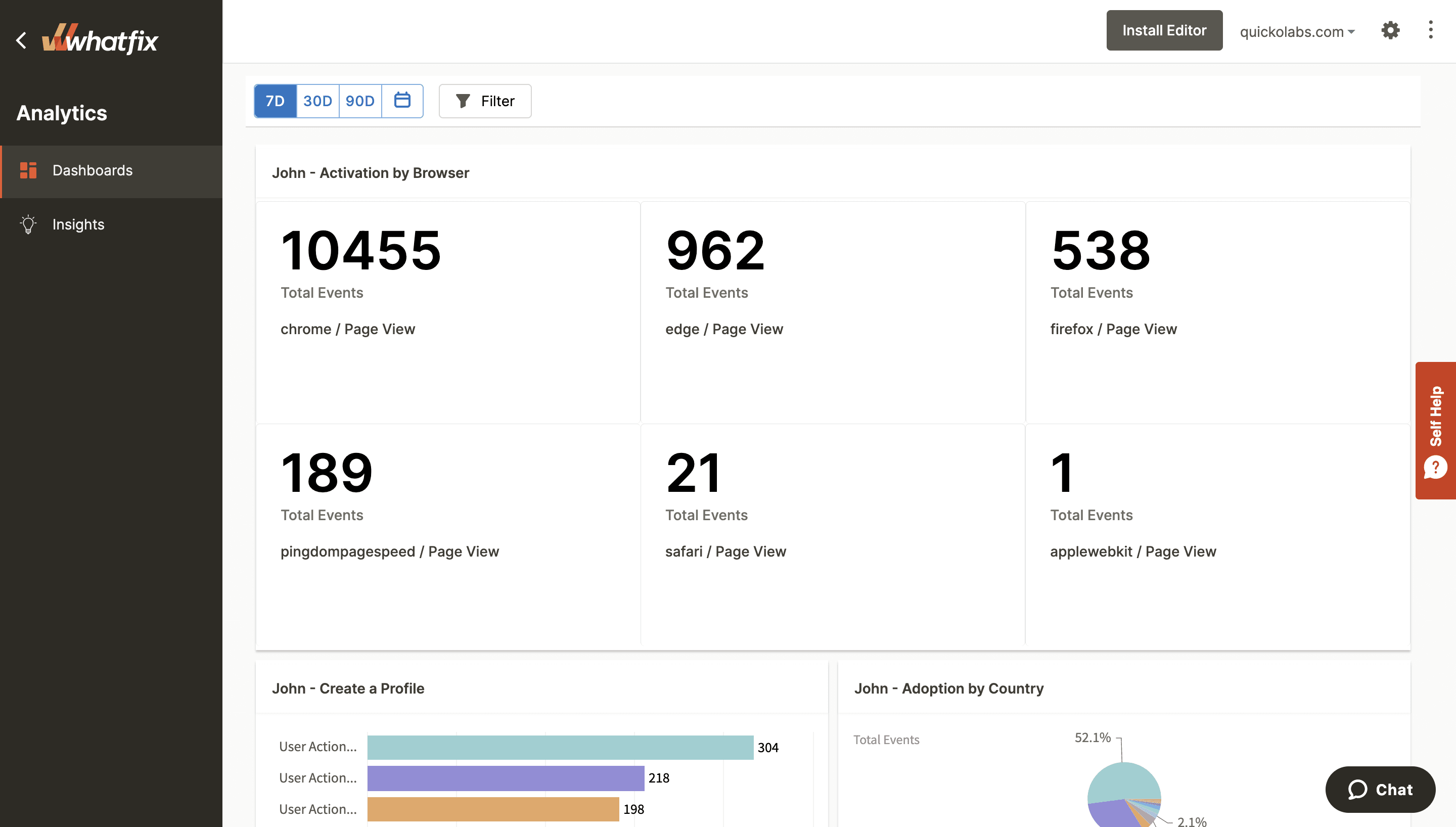What Is Training Analytics? (+7 Learning Metrics to Track)


Training is a critical investment to your organization’s success. L&D teams spend many hours developing training courses to improve employee satisfaction, retention, and productivity. However, if you do not have properly set up training analytics to measure training effectiveness, there will always be questions like: is this training effective? Do employees find it helpful? Is it supporting organizational goals and improving performance?
What Is Training Analytics?
Training analytics is the measurement, collection, analysis, and reporting of data about your training programs to optimize costs, measure training effectiveness, and improve learning experiences. Training analytics supports the strategic objectives of a company and has a positive influence on employee engagement.
Why Do You Need To Measure Training?
With the growing importance of L&D departments in digital transformation initiatives, there is a need for L&D teams to demonstrate how effective each training program is and how it contributes to business outcomes and objectives.
Measuring the success of your training program helps make the connections between learning and results. When you regularly track your training initiatives, you know where it’s falling short, where you’re losing engagement, and whether it meets learners’ expectations. Understanding the training challenges helps you respond appropriately, for example, with content upgrades, allocating resources effectively, and improving the learner experience to boost learning retention.
Types Of Training Analytics Methods
Let’s discuss the different training analytics methods.
1. Descriptive analytics
Descriptive analytics is the most basic form of analytics that collects data from various sources to help make decisions for future training plans. For instance, if the data shows increasing dropout rates, you can take steps to improve the training content or switch to a different employee training method. Insights like these allow you to enhance training programs and eliminate courses that waste money and resources.
In short, descriptive analytics explains the situation post-factum and allows you to make conclusions but does not diagnose why something happened. If your organization is looking for in-depth insights, you can combine descriptive analytics with other types.
2. Diagnostics analytics
Diagnostics analytics helps identify patterns to get insights into a particular problem or opportunity. For instance, data from diagnostic analytics might show that the CRM training course experienced low completion rates among senior executives and higher among new hires. Further diagnosis found that the course content is too basic for the senior executives. This means you need to roll out an advanced level of CRM training for them.
Diagnostics analytics help ensure your training program is personalized and engaging for all learners and leaves a positive impact on employees’ performance.
3. Predictive analytics
Predictive analytics helps identify the difficulties learners might face during their learning experience. This allows L&D managers to provide early intervention and targeted support to enhance the training quality and raise the engagement ratio.
For instance, the data from a post-training survey reveals that some participants did not prefer learning on a desktop since most of them are often on the go and prefer access to mobile learning.
Predictive analytics helps you identify the challenge and offer solutions to meet individual needs.
4. Prescriptive analytics
Prescriptive analytics is considered an extension of predictive analytics.
Prescriptive analytics aims to find solutions about what should be done and strategically plan for training interventions. In simple terms, prescriptive analytics is the additional step necessary to find the best solution to the problem apart from collecting data, making diagnoses, and predicting outcomes. It employs specialized algorithms to support optimization.
For instance, a training manager uses predictive analysis to discover that most learners need a particular skill to complete the newly launched course. Prescriptive analytics can assist on the matter and help determine options for the action plan.
7 Metrics to Track With Your Training Analytics Strategy
Here are some of the most important metrics to measure the effectiveness of your training program.
1. Training KPIs
Training programs must have set KPIs to evaluate their effectiveness. These make it easier to understand and measure the value a training program brings to your organization.
Identify the key performance indicators (KPIs) you want to impact with your training. For instance, increased sales of a specific product, improved employee performance or engagement, bridging a knowledge gap, attaining loyal customers, etc.
When you set actual numbers for your KPIs, such as a certain percentage of increased sales or a defined number of customers who turn to you for repeat business, measuring them after training is easy. Hitting KPI goals is a clear indicator that your training is effective.
2. Participation rate
Another powerful training analytics metric is participation rate. Participation rates help determine your employees’ overall engagement with the training program.
A corporate LMS is a valuable platform to deliver eLearning while tracking the activity and progression of your learners. By tracking the participation and engagement data and monitoring the overall scores, success rates, and time spent on the LMS, you can measure the effectiveness of your training. A key indicator to monitor is the drop-off rate on courses. If you see a high drop-off, it indicates that the course is not engaging enough for your learners.
3. Completion rate
Once your learners register for the training course, it’s critical to analyze whether the content is creating a compelling learning experience. You must go as granular as tracking engagement with individual training materials. Are learners watching the complete training video before going to the assessment? Are learners completing the entire workflow to complete a task or dropping off in between? Which learning module are they spending the most time on?
All this can be done by implementing a digital adoption platform. A DAP helps create engaging in-app tutorials to guide learners through every step of the task. And the analytics dashboard enables you to track which courses learners interact with, how often they interact with the course, the average course completion rate, and where employees are dropping off. Based on this data, you can infer which courses are effective, ineffective, useful, interesting, or confusing.

4. Training intake result
Gathering and interpreting training intake data before launching a training program helps lay the necessary groundwork for understanding an organization’s need for specific training programs and making decisions based on measurable outcomes to achieve better ROI.
Some examples of training intake metrics include
- The volume of training requests received by the L&D department
- The topic of each request
- Skill gaps to be bridged with the training
Understanding the need for training programs and creating modules based on measurable skill gaps makes it easier for training managers to demonstrate and quantify the importance of training. Such training programs are more likely to result in learning and performance improvement while giving the expected return on training investment that company leaders use to justify program costs.
5. Performance-related data
Another crucial metric for training analytics is performance-related data which shows whether the participants are putting their learning into practice and if the training is positively impacting their job role.
Set a learning objective based on your expectation from the training and how you can measure it. The performance-related KPIs do not have to be strictly numerical. They can also refer to a change in employees’ behaviors in their everyday work.
The Kirkpatrick model is one of the most effective and globally recognized methods of evaluating performance-related data for employee training and learning programs. The model measures four levels of criteria:
- The reaction of the learner and their thoughts on the training program.
- Learning and increase in knowledge from the training program.
- Behavior change and improvement after applying the learning on the job.
- Results that the learner’s performance has on the business.
For example, say your goal is to transition to a new CRM platform for sales reps to drive sales productivity and eliminate manual tasks.
Note the number of opportunities created in the quarter before the CRM implementation, then assign a CRM training course to your sales reps. After training, pull the win rates and sales performance KPIs and track the same metrics in the next quarter. Compare the metrics of each trainee to observe which of them have adopted the new CRM and are using it in their daily tasks and which aren’t.
Additionally, use your employee analytics to gather insights into which employees are engaging with the training and implementing their learnings on the job and which employees are underutilizing the tool.
6. Revenue and profit
When training is effective, it shows up in your bottom line. Training opportunities have clear benefits for improving employee performance at work, as happy and satisfied employees are more engaged, productive, and likely to stay with the organization longer.
You can implement the Phillips ROI Model to measure and communicate the benefits of your training programs and provide hard evidence to executives on the value of their training programs.
Here’s the formula used by the Phillips ROI model to calculate training ROI:
ROI (%) = (Net benefits of the training program / total program costs) X 100
7. Internal content consumption
Some software vendors provide internal help content and support documentation for employee training. Or you can adopt a digital adoption platform such as Whatfix to provide “how-to” articles, FAQs, knowledge bases, in-app guidance, etc., on any application to enable effective user adoption.
But how do you know if the end-user support content is being consumed?
Tracking the internal content consumption rate enables you to learn how effective is the product adoption and what more you need to add to the help center to engage the learners. Remember, the more valuable and relevant your internal content is, the more effective your training program.

Challenges of Using Training Analytics
Here are some of the most common challenges of using training analytics.
1. Not aligning training analytics strategy with organizational goals
While developing your training analytics strategy, it is important to understand why you want to analyze certain elements and how you will use this data for future improvements. This will help align your training analytics strategy with overall organizational goals.
2. Inadequate L&D tools
The lack of L&D tools to ensure quick, safe, and complex access to data can discourage organizations from making practical use of training analytics and limits their operation considerably.
3. Quick ROI expectations
Companies that follow the analytics-driven business expect to see immediate changes and focus on an excessively broad range of activities. However, failed expectations hinder future investment, so companies must select lesser initiatives that might bring the highest value in the shortest time.
4. Lack of experts with proper analytical qualifications
Poor knowledge of tools and a lack of experts with proper analytical qualifications hinder your training analytics strategy. Additionally, those with no L&D or HR analytics (or any data analytics) background may struggle initially to find ROI with training analytics.
It is crucial to analyze training effectiveness to get the most out of your employee training investment and understand if the set learning goals are achieved.
Implementing a digital adoption platform such as Whatfix helps you create scalable corporate training flows built directly into your enterprise applications and provides actionable insights to build data-backed learning experiences for your employees. Whatfix’s in-built analytics provides usage and engagement related data for your training content in easy-to-understand visual formats. It helps track training analytics metrics such as completion rate, participation rate, engagement rate, content consumption rate, queries resolved, etc.

Schedule a free demo with us to learn more about creating personalized, on-demand corporate training programs supported by advanced analytics to measure ROI.

Thank you for subscribing!


